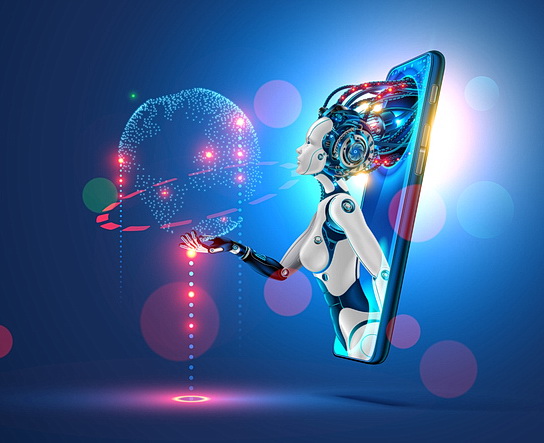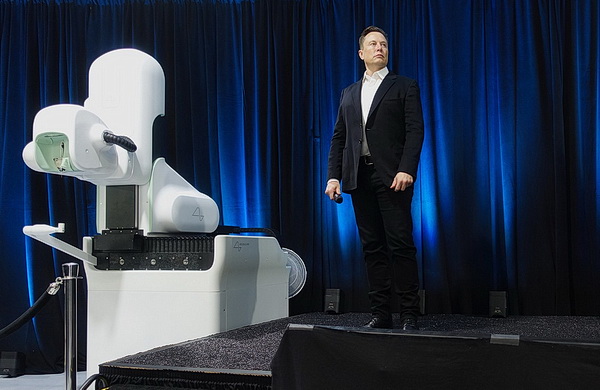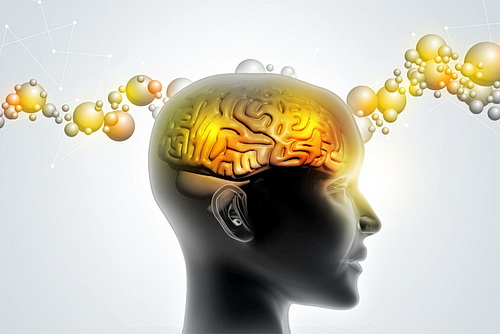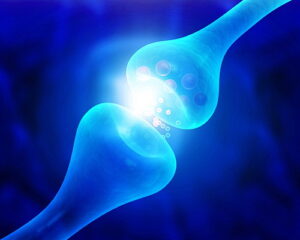
Lucy Has Arrived!
In 2014, the sci-fi thriller Lucy was released in theaters nationwide. It starred Scarlett Johanson, whose brain became so powerful that she could move objects with nothing but a thought.
This may sound far out, but it is much closer than you think. Enter the ‘Link’ —a computer chip implanted inside the human brain. It can read and convert our thoughts into digital signals a computer will understand and respond to.
Although the Link is in its fetal stages, the results are so promising that we can confidently say that Lucy is here to stay. No more is it a thought of the future (pun intended )
One example would be a person who wants to browse the web on their iPhone, and he/she would control the device by simply thinking about it. This can be particularly useful for those who have paralysis, neurological disorders, or prosthetic limbs, as well as assisting with a range of other disorders where a person is medically incapacitated.
The Makers of the Link

Neuralink is an advanced neurotechnology company founded by Elon Musk. It specializes in developing brain-computer interfaces (BCIs). These interfaces allow communication between the human brain and external devices by translating neural activity (movement of brain cells) into digital signals (the electrical impulses (1s and 0s) that computer systems use, called “bits).
The Neuralink Device
The Link is a tiny, flexible device about the size of a small coin surgically embedded into the human skull. It contains thousands of hair-thin electrodes that interface directly with the brain cells. These electrodes read the neural activity and translate them into digital data (the 1s and 0s mentioned above).
This is quite fascinating because there are roughly 86 billion cells in the brain, each measuring about 680 microns, which is extremely small. One micron equals 0.000039 inches or 1/100 the size of a human hair.
Groundbreaking Medical Features

Wireless Charging
From cell phones to earbuds to EV cars, we all have some device that needs routine charging, maybe twice a day, depending upon its use. With the Link, it gets its charge from the skin.
A Robotic Miracle
If you think AI is cool, imagine a robot that surgically implants the device in the brain! That might sound scary, but it has been proven to work more efficiently than any human can do, no matter how skilled the surgeon might be.
How Does It Work?
The process involves several steps.
-
- Recording Neural Activity: The Link has thousands of thin, flexible electrodes embedded in the brain tissue. These terminals capture the electrical pulses of nearby neurons and their voltage fluctuations. The fluctuations are in analog format, meaning that they act like a sine wave. Digital data is in the form of whether a signal is on (represented by a computer bit of 1) or off (represented by a computer bit of 0). The size of the voltage fluctuations determines which instance it is and is subsequently converted to the appropriate computer bit format.
-

Neuron cells send electrical chemical signals. 3d illustration. iStock - Analog-to-Digital Conversion: This is a common practice for many devices we use every day, and the Neuralink device is no different, except that the translation process occurs within the tiny Link chip. The captured analog signals are changed into digital data via the chip’s electronics, which amplifies the weak signals, filters out the noise, and then converts the voltage changes into a series of digital bits.
- Feature Extraction: Not all neural activity is converted. The Link’s processing unit analyzes the digital data stream and extracts specific features that are known to be associated with the desired output, such as movement, speech, or sensory perception. This could involve identifying patterns in the timing and frequency of the electrical spikes or the activity of specific groups of neurons.
- Machine Learning Algorithms: Now, the AI part. The extracted data is fed into machine learning algorithms trained on a large dataset of brain activity. These algorithms map the neural patterns to specific commands, thoughts, or sensations; in other words, they decode the brain’s messages.
- Output Generation: Based on the decoded information, the Link can trigger specific actions (e.g., controlling a computer cursor or prosthetic limb) or generate external signals (e.g., synthetic speech or electrical stimulation for sensory restoration).
How the Link Will Be Applied
Neuralink’s technology can potentially transform medical technology into the 24th century and beyond.

-
- Human-Computer Interaction: The ability to control devices directly through thought is closer now than ever.
- Medical Applications: Restoring lost sensory and motor functions in individuals with paralysis or neurological disorders.
- Cognitive Enhancement: Humans may be able to retain information at an exceptional level, called Enhancing Memory. The possibility of having extremely long-term memory can have significant advantages for everyone, from students to the elderly, who would gain the most benefits.
The Future of Neuralink
The Neuralink technology holds immense potential to reshape our understanding of the brain and its interaction with technology. While challenges remain, ongoing research and development efforts bring us closer to a future where brain-computer interfaces will become a reality. The potential for advanced human abilities and our interaction with the world around us will be within our reach!

